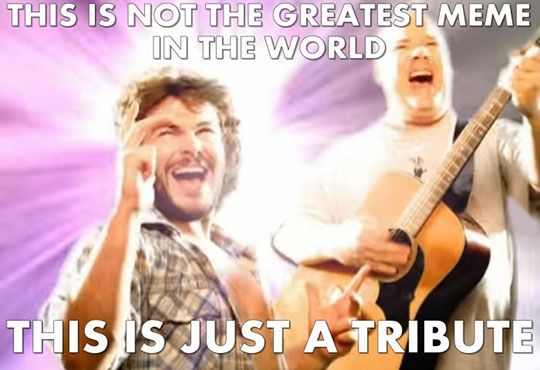‘On Super Corals and Where to Find Them (Or a Cautionary Tale of Using Memes in Science)’ – Part 1
Read Part 1 of our essay on super corals: ‘On Super Corals and Where to Find Them (Or a Cautionary Tale of Using Memes in Science)’ on Medium or click the link below:
On Super Corals and Where to Find Them
(Or a Cautionary Tale of Using Memes in Science)
Part 1
By Colin Foord, Co-Founder of Coral Morphologic, Miami, FL
Meme: noun
1. a cultural item that is transmitted by repetition and replication in a manner analogous to the biological transmission of genes.
2. a cultural item in the form of an image, video, phrase, etc., that is spread via the Internet and often altered in a creative or humorous way.
In recent years, a sensational term with little scientific value has been capitalized on by coral researchers seeking to attract media interest and funding towards their work: the super coral.
But what exactly makes a coral super, and from who and where did this idea first propagate?
In 2011 I gave a TEDx talk titled ‘A Hybrid Future – The Corals of Miami’ that revolved around a logic-defying specimen of hybrid Acropora prolifera I’d found living on the manmade seawall of PortMiami’s Government Cut shipping channel. Given the general audience, I used the term super coral in order to highlight why this hybrid coral was so exciting – and how it may represent the evolutionary potential of corals to adapt to swiftly-changing anthropogenic conditions.
The hybrid Acropora prolifera, photographed in daylight (left) and with a fluorescence filter at night (right) (Coral Morphologic)
Coral Morphologic’s original definition of a super coral was one that had pioneered (as a larva) into an anthropogenically-disturbed environment, settled, and grown to reproductive adulthood. Hybridity and the expression of UV-protective green fluorescent proteins were two additional traits observed in the Acropora prolifera that seemed to qualify the addition of super for this particularly unique coral genotype. Also, it should be noted, in Miami, the adjective ‘super’ is added to all kinds of things in casual conversation.
Super – Miami’s enhancing adverb and adjective of choice. It’s not “really hot in here”; it’s “super-hot.”
But over the past 7 years, as the coral crisis has worsened, the term super coral has been repurposed by other coral researchers to attract attention to their work. While it may make for a potent headline, the problem with the descriptor ‘super’ is that it doesn’t necessarily imply anything objectively scientific. Consequently, the subjectivity of the term has allowed the concept to be mutated to fit each researcher’s agenda like a meme. But in doing so, the term has since generated controversy within the coral science research community over its use, what it implies, and what realistically can be done to mitigate the ongoing coral reef crisis.
I first realized the super coral concept had gone mainstream when I was asked in the summer of 2017 to provide photographs for a book written by an anthropologist who has spent the past several years studying coral biologists and their professional culture. To my surprise, there was a chapter dedicated to ‘super corals’ in the table of contents, and one of the requested photos was that of the original hybrid Acropora prolifera from my 2011 talk. The anthropologist’s inquiry made me wonder whether I was indeed the first person to use the term super coral… and lo and behold it turned out I was not.
Based on research done via Google querying between 2000-2011, the only other recorded online usage of the term super coral was by eminent coral and climate change scientist Ove Hoegh-Guldberg during a 2006 TV interview with ABC Australia:
Professor Ove Hoegh-Guldburg: “I don’t think we are going to find a magic bullet that is going to say, look hey there is this super coral and we can just grow it all over the reef. I think what we have got to do is to actually provide the best science to underpin, I think, the political decisions that have to be made about global climate change.”
From this interview, it appears Dr. Hoegh-Guldburg had already concluded coral lacked the evolutionary ability to adapt and survive in the Anthropocene. Instead he suggests that the best hope for the future of reefs would come from political action rather than scientific innovation. When coming from a pillar in the field, the assessment that politicians are better suited than his peers to preserve the future of coral comes across quite cynically bleak.
But the fact that the term super coral was first used in the media by a distinguished scientist from a skeptical, pejorative perspective only serves to highlight the biases the scientific establishment has long held against coral restoration concepts and ideas. I believe this conservative attitude displayed by many of the eldest coral researchers in the field has actually impeded development of progressive concepts that will help preserve global coral biodiversity and reef health.
A classic Coral Morphologic image: a multi-morph carpet of Ricordea florida corallimorphs native to South Florida (Coral Morphologic)
Speaking from my own experience in the field of coral science, it was precisely this pessimistic attitude towards innovative coral aquaculture practices that drove me away from pursuing a career in institutional research. Back then, the majority of coral researchers were focused on studying dead and dying corals in the wild, rather than figuring how to keep them alive and reproducing. In 2007, after a fruitless search for a mentor in either coral aquaculture or corallimorph taxonomy, I took a leap of faith to develop Coral Morphologic as an independent platform for science, art, education, aquaculture, and public communication. Instead of depending on grant funding or corporate sponsorship, the goal was to power Coral Morphologic through the beauty of the corals (and corallimorphs) themselves in part to counter the overwhelmingly negative pathos emanating from many of the field’s most senior voices.
Rather than sowing more tales of doom-and-gloom, which may cause some to tune out entirely, we hypothesized that showcasing examples of corals’ morphologic adaptability and aesthetic beauty was a more productive way to inspire the public to care about the future of reefs on planet Earth. While delivering bad news about the environment might be an effective way to obtain immediate media attention, it isn’t always the best way to motivate people with the proactive response you’re hoping for.
Empathy, or the lack thereof, is usually the difference between a person caring about an issue or not. While charismatic megafauna like pandas have long been the literal face of the environmental movement, corals lack a face entirely. Without a brain, cuddly fur, or eyes to make contact with, it is easy to see why they have been misunderstood for so long. But what they lack in cute facial features, corals make up through their captivating fluorescence, geometric beauty, and remarkably futuristic life history strategies. Rather than focusing on the habitat-scale declines of the reef, Coral Morphologic instead chose to highlight the individual-scale of the coral animals in a way that builds empathy and symbiosis between human and coral. This focus on the individual was precisely our modus operandi in presenting the pioneering Acropora prolifera living along PortMiami as a super coral; one that defies expectations and serves as an inspiring example of surviving against all odds.
The hybrid Acropora prolifera, the original ‘Super Coral’ (Coral Morphologic)
If you were to ask a coral biologist to describe what the ideal growing conditions for a coral should be, chances are they would characterize an environment with pristine turquoise tropical water – the sort of scene from Tahiti or the Great Barrier Reef that you’ve surely seen dozens of times in the pages of National Geographic magazine.
But if you’re searching for super corals, then these remote coral reefs are not where you should be looking (though you might call anyone proposing to find them in these places super tourists).
The reality is that if you want to find yourself a super coral, you’d better be prepared to dive into water that is unfit for recreational swimming (don’t forget ear plugs!). A perfect example is in the water alongside the highway connecting Miami to Miami Beach. A look from shore reveals the rocky riprap shoreline littered with trash and plastics of all kinds. The water is murky green and visibility can be less than a meter at low tide. Not ten meters away from this shore, endless traffic belches out acidifying CO2 and the fumes of fossil fuel on a daily basis. Multiple times throughout the year, the county issues E. coli swim advisories due to various sewage leaks and spills. But just below the low-tide line, you will find one of the last habitat refuges for multiple species of Florida’s important reef-building corals.
The discovery of these highway-living corals followed shortly after finding the hybrid Acropora prolifera in 2009. Basically, my thought process was: “If one of the rarest corals in Florida can live inside our shipping channel, then what other coral species will I find if I explore closer towards the urban core of downtown Miami?”
I have since documented 27 of Florida’s 46 stony coral species to have self-recruited onto the manmade infrastructure and debris within Miami’s intracoastal waterways. Alongside them live a myriad of soft corals, sea fans, sponges, and other invertebrate reef species. To demonstrate the unexplored potential of these urban habitats, Coral Morphologic has identified several undescribed species of Zoantharian soft corals colonizing Miami’s man-made coastal infrastructure, one of which shows great pharmaceutical promise as a source for a hard-to-synthesize cancer-destroying compound.
After introducing the seawall-living Acropora prolifera to the world as a super coral during the TEDx talk, Coral Morphologic made the conscious decision to use the term urban coral over the scientifically-ambiguous super coral. Perhaps it was the vague nature of the term that led the New York Times to turn down a Miami writer’s super coral pitch about the hybrid Acropora prolifera in 2011. In lieu, the writer self-published the story, marking the first time the term super coral was defined and described online.
The NYT waited until 2017 to write a super coral story.
The NYT story described how scientists in conjunction with an Australian tourism bureau (GBR Legacy) have appropriated the super coral meme in an attempt to paint the picture that the surviving corals on the Great Barrier Reef are super. Rather than being used for any real scientific merit, it appears the term has been utilized as a tool of propaganda meant to counter several years of declining ecotourism following the GBR’s recent episodes of coral mortality. Frankly, this is a grossly misleading use of the term, and also an insult to the surviving corals. Are the remaining corals important to the future of the Great Barrier Reef? Absolutely. But are they super corals? No… they are survivors. To put it into human perspective, this misnomer is no different than calling survivors of a major catastrophe, natural or manmade, super humans.
And like survivors of any catastrophe, there may be lingering, unseen after-effects that continue to negatively impact individual health. While some survivors go on to thrive by taking opportunities previously unavailable to them, many others continue to suffer from post-traumatic stress disorders that can prevent them from reaching their lives’ full potential. Scientists know, for example, that survivors of bleaching events are more prone to disease and are less likely to reproduce, and if they do, they release fewer gametes.
Might these survivors have traits which enabled them to survive in conditions that their neighbors could not? Yes, but they could have also just been very lucky to have survived a gauntlet that others did not. From a scientific perspective it is difficult, if not impossible, to determine whether a coral’s survivorship on a natural reef was based on luck, genetics, individual tenacity, or a combination. Are these survivors essential to the continuation of their genetic lineage? Absolutely. Should additional protections be put in place to ensure a full recovery? Absolutely. Should ecotourism bureaus re-brand these survivors as something for tourists to come gawk at? Absolutely not. If anything, these surviving corals need all the space and protection away from human influence that they can get.
2014 coral bleaching report in the lower Florida Keys (Coral Morphologic)
Ironically, researchers who have accused their colleagues of using the term super coral as a means of greenwashing an ecological disaster also seem to believe that more ecotourism is the best answer to GBR protection. This logic simply doesn’t add up. Not only does flying tourists from around the globe to Australia create a tremendous carbon footprint (which negatively impacts the GBR’s water chemistry), but the literal footprints of these tourists do more harm than good for living corals. Can anyone please direct me to a natural reef anywhere in the world where health has improved above baseline due to an influx of tourists and divers? Toxic sunscreen, anchor damage, human waste, and plastic garbage are all significant local pressures that tourism brings to coral reefs. It is Coral Morphologic’s opinion that artificial reef building is a logical next step for reef ecotourism, adding habitat and shoreline protection while still providing tourists with a memorable experience swimming amongst coral reef species.
Though not perfectly sited for coral growth, the MUSA Underwater Museum in Cozumel, Mexico laid the blueprint on how building an alternative dive site can reduce human impacts on the natural reef while becoming a world-class destination in its own right.
For people who want to experience diving on natural reefs, they should in turn be actively engaged in transplanting corals back onto degraded reefs to offset the impacts of their diving in the first place. Here in Florida, the Coral Restoration Foundation set the standard for how coral reefs can be restored through ecotourism. PADI, the largest dive certification program in the world, recently introduced a coral restoration dive specialty.
Coral Restoration Foundation coral tree nursery off Key Largo, Florida (Coral Morphologic)
Yet many old school coral researchers like Terry Hughes (Professor and Director of ARC) are still opposed to such innovative interventions, suggesting that replanting corals on reefs gives false hope to the public, akin to sticking fingers in a leaky dike. Instead, he (like Ove-Guldberg in 2006) suggests the only viable solution to save corals is by drastically reducing global carbon emissions through political action. He is definitely not wrong about these carbon emission concerns, though his position is painfully hypocritical considering Hughes conducts his aerial bleaching surveys high above the GBR whilst burning copious amounts of fossil fuel in an aircraft. Surely an unmanned surveillance drone would be less polluting and more cost effective for such missions.
In vocally opposing the innovative research and restoration projects proposed by his colleagues, Hughes sets a dangerous precedent of holding corals hostage in a politically charged global climate change debate by refusing to support any short or medium-term restoration solutions. Hughes’ depressing pathos is most easily observed in the pinned tweet on his Twitter page:
“I showed the results of aerial surveys of #bleaching on the #GreatBarrierReef to my students, and then we wept.”
The question I have been trying to ask Hughes is “What did you say or do next to inspire your students to stop crying? With a lifetime career ahead of them, what do you suggest these budding coral biologists should focus on in order to counter these declines?” If Hughes truly believes that technological innovation in local coral reef restoration is a waste of time, money, and effort, then what should his students do? Drop out of science and instead become politicians and lobbyists? Perhaps start an independent platform to improve coral science communication? It seems I’ll never know this answer because Terry blocked me on Twitter for asking these basic questions.
Hughes’ views towards coral restoration appear to be linked to his belief that these measures simply serve as a stop-gap measure to make the public feel less guilty about the future of coral reefs. And he is not wrong that labelling the survivors on the GBR as super corals is a disingenuous attempt to try and make lemonade out of lemons. But at a certain point, the internal tensions and public tantrums within the coral research community over how to effectively communicate with the media and global public may just wind up “poisoning the well.” This type of professional sniping (“utter bullshit” to quote Hughes, referring to super corals) only serves to undermine the public’s trust of science in the media and highlights the dangers of utilizing memes in science communication.
Hughes’ attitude doesn’t appear to have gained him any new allies, with a GBR tourism leader saying outright in the international media: “I think Terry Hughes is a dick”.
Blocked by Hughes (screenshot via Twitter)
In the time I’ve been crafting this essay, an even newer super coral project was announced by University of Miami coral researcher Andrew Baker at the Frost Museum of Science that manages to water down the ambiguous definition even more. Baker’s research has long-focused on the Clade D strain of Symbiodinium (meme-ified ridiculously as ‘Tenacious D’) – a zooxanthellae strain that has proven capable of withstanding higher water temperatures, and therefore seen as being able to confer bleaching resistance to the coral animals they are symbiotic with. In Baker’s super coral experiment, taking place within full public view of museum visitors, they are subjecting endangered Acropora cervicornis corals with heat-stress beyond the threshold of bleaching. Their goal is to then inoculate these bleached corals with Clade D zooxanthellae in order to produce so-called super corals. But cute names aside, this experiment merely mimics just one of the multiple microbiotic evolutionary processes surviving corals go through on the reef after every bleaching event.
An exponentially meta Tenacious D meme (found on the Internet)
And ethics of torturing/ heat-stressing animals in public view aside, this experiment will not produce super corals. In fact, the genotype of the coral will remain the same throughout the experiment. If anything, the acclimatization of these staghorn corals to unnatural aquarium conditions and artificial light introduces multiple variables that may or may not ‘help’ these corals if they are ever transplanted back to the wild.
While Clade D zooxanthellae may confer some bleaching-resistance to the coral, studies by other researchers have shown it may also slow the calcification and growth rates of the coral itself. There appears to be some significantly less-than-super trade-offs involved for the coral in harboring this microbe. Furthermore, recent genetic analysis of Clade D Symbiodinium in the Caribbean suggests that it is actually an alien-microbe from the Indo-Pacific, likely introduced to this hemisphere within the past several decades. If Baker’s experiment is taken to its logical conclusion, a successful outcome involves the spread of a non-native microbe that potentially slows the growth of our pre-existing Caribbean coral genotypes. This introduces new layers of ethical considerations revolving around the addition of non-native species to our reefs… but super corals they are decidedly not!
So until and unless an objective definition is agreed upon, super coral is not a term researchers should be using in #SciComm. Its subjectiveness is precisely why Coral Morphologic chose the term urban over super to describe the corals pioneering into the highly-developed North Biscayne Bay ecosystem. By our definition, all urban corals are super corals, yet regardless of whether you call them urban or super, we believe Miami’s pioneering corals to be amongst the most scientifically-illuminating genotypes on the planet.

In Part 2 of this essay, we will take a deeper dive into the over-developed, polluted waters of Miami’s urban coral ecosystem.





